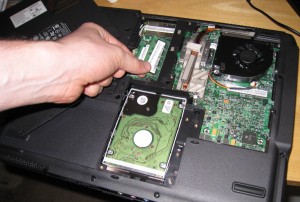Problems on the Auction Block
 eBay is the biggest auction site on the internet. This has generally worked well for people. More sellers provide more products to buyers. More buyers are better for sellers. But eBay has taken unfair advantage of this near market monopoly.
eBay is the biggest auction site on the internet. This has generally worked well for people. More sellers provide more products to buyers. More buyers are better for sellers. But eBay has taken unfair advantage of this near market monopoly.
Over the last several years eBay has regularly increased fee percentages. For example, if you are a seller and your item ends at $150, then your ending fees will have increased over 40% in the past years. Most recently the final value fee changed from 5.25% to 8%. eBay has tried to hide this by lowering insertion fees, but the overall fees have increased dramatically. eBay also owns PayPal now and takes a cut from that transaction too. See this Fee Calculator for exact fees.
No greater service has come with these fees. eBay still has rampant fraud. Invariably people will email me as a seller asking me to end my auction early in exchange for their paying me early. It’s a Nigerian Prince type scam.
Buyers are still regularly defrauded by sellers who have built up a good reputation by numerous bogus low-cost auction transactions.
eBay has also made things bad for sellers by not allowing them to leave negative feedback for buyers. That’s right. You can leave feedback, but it has to be positive. I recently sold something on eBay and the buyer just didn’t pay. I can’t leave that person negative feedback. eBay has said that this is so that sellers do not have an unfair advantage. But all this has done provide an unfair advantage to buyers.
Competitor Please
Because of eBay’s arrogant attitude toward its customers, it is time for them to get a real competitor. The nature of an auction is that it needs lots of buyers and sellers to work. So it would be easiest for a big company with existing traffic to offer auctions.
Google is the biggest kid on the block. If they started auctions, eBay would be forced to lower prices. However, eBay is Google’s largest customer for its ads. Google has also been slow in moving into the content business, afraid to scare off its advertisers who might be competing with them. Still, Google could easily compete with eBay.
Yahoo gave up on their rival auction site about a year ago. It was odd that Yahoo search engine didn’t feature their search results over those from eBay. Still, Yahoo has many content sites and could try again to advertise a new auction site on its other websites.
Amazon’s Selling on Amazon could be a strong natural competitor. It sells at a fixed price, but has higher fees than eBay. Amazon also has a payment system that is somewhat of a PayPal competitor, but it costs even more and is difficult to use.
An unknown could also compete. But these sites have to do things like offering fixed-price auctions for fear of not enough bidders. Etsy is for selling handmade goods. ePier is a small and simple auction site. Overstock.com also has an auction site.
Someone should step up. There are numerous forums with people complaining about eBay’s fees and behavior. People are getting fed up and are ready for a real alternative.
“The great thing about this system is that from one computer it is possible to push out updates to all machines in a corporate network at once,” Mr. Stewart said. “This is a useful tool that Microsoft has provided. However, the bad guys said, ‘We’ll just use it to roll out our Trojan to every machine in the network.’ ”

 I just got a Virginia client this
I just got a Virginia client this 

 eBay is the biggest auction site on the internet. This has generally worked well for people. More sellers provide more products to buyers. More buyers are better for sellers. But eBay has taken unfair advantage of this near market monopoly.
eBay is the biggest auction site on the internet. This has generally worked well for people. More sellers provide more products to buyers. More buyers are better for sellers. But eBay has taken unfair advantage of this near market monopoly.